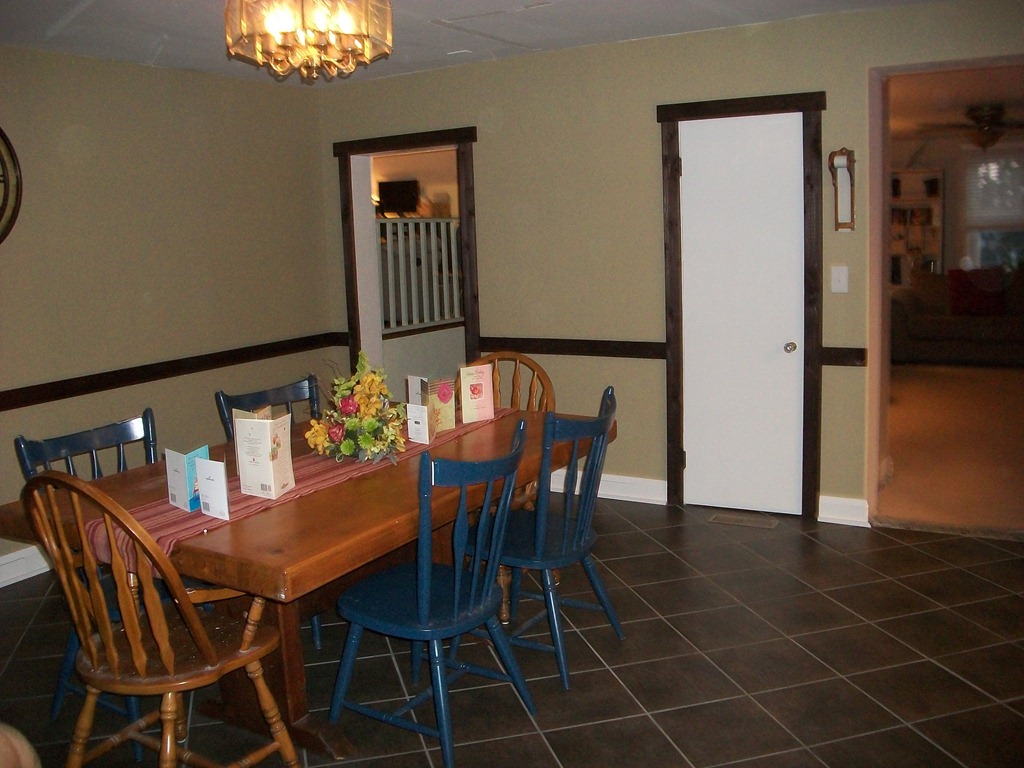Be sure to check out the previous parts of this series:
Part I: Demo
Part II: More Demo
Part III: Repairing Subfloor
Part IV: Installing
Ok. Wow. Time to sand.
First… happy belated Thanksgiving! This post was half-written when I left for some quality family time in Chicago over the holiday.
I found this article online about how to sand the floor. It recommended that I start at a higher grit like 80, and sand diagonally across the floor. This is to ensure that the floor is evenly sanded across the lateral seams. That seemed odd to me, as I’d never sand like that on furniture. But ok, I’ll take the pro’s advice.

You can see in that picture that I’ve completed my diagonal sanding and have started the with-the-grain sanding. I’ve moved to 100 grit sand paper, now. It looks to me, as I’m sanding, that my diagonal lines are being sanded away as I go deeper into the wood.

In that picture, you can’t even see any lines any more. “Victory!”, I say to myself. As we’ll learn later… this didn’t end up as the victory I thought it would.

Dani takes a moment to both take a picture of the sanded floor and show off her new boots. I don’t know what it is with women and boots these last few winters. They’re not even boots! They’re shoes with more space for frilly things.
So after a lot of vacuuming, sweeping, and gentle mopping, I was ready for the finishing process. We opted not to stain the floors. We really liked the color of the wood in it’s natural state. We also opted to go the environmentally friendly route and used a water-based system. Minwax seemed to have a good system, and so I went with that. It was not inexpensive. Compared to the cost of the normal oil-based stuff, the water-based system is easily double. But, I could put another coat on 2 hrs after the first coat, it cleans up with water, and my house didn’t smell for 3 weeks afterwards. With the oil-based stuff, you’re supposed to sleep somewhere else for 3 days. That’s crazy! Who would want those chemicals seeping into their home?
First step, then, was to put a coat of Minwax Water Based Polyurethane for Floors Base Coat on.
The base coat, according to Minwax’s website, “seals the wood grain, preventing discoloration (tannin reaction) between the wood and Minwax® Water Based Polyurethane for Floors. Many water based finishes have a high pH level that can react with bare wood causing it to discolor.”
Mmmmmmk. Sounds good. The stuff went on easy enough, too. I used a lambs wool applicator on a stick. Pretty standard.
Two hours later, it was time for the first coat of poly.
The Water Based Minwax Polyurethane for Floors poured nice and easy, and once I had a system worked out, it went pretty quick. I found the best way to do it was to keep a bead of poly on the floor and to work with the grain, gradually moving the bead 6 inches at a time up the grain.
Once I had 2 coats on, I put some finishing sandpaper onto a drywall sanding pole and went around sanding for an hour. This was the hardest part of the application process.. arms. so. tired.

The sanding is to smooth out everything prior to the final coat. I chose to do 2 more coats; I’m hoping it gives me a little more longevity.



After the vigorous sanding, Dani worked her butt off to sweep and mop up the mess while I rested my sanding-weary arms.

I also took the chance to snap this picture of the state of the kitchen during all this. Ughh.

Well this post got a little longer than I anticipated. I think I’ll keep you all in suspense and do The Reveal in a separate post. So check back soon for the last post in the New Flooring series!



















































